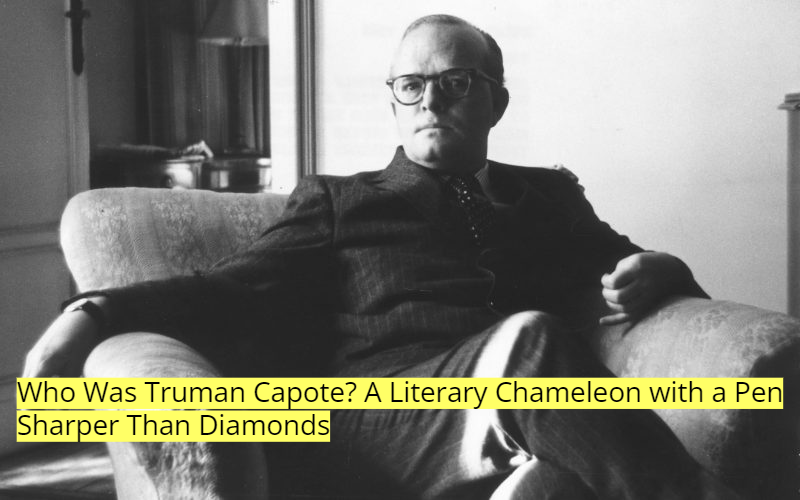Truman Capote. The name evokes images of bejeweled socialites, Southern drawls dripping with gossip, and a writing style as precise as a jeweler’s scalpel. But who exactly was Truman Capote, the man behind the iconic works and larger-than-life persona?
Born Truman Streckfus Persons in 1924, Capote’s childhood was a whirlwind of instability. Imagine a young boy, bounced between relatives after his parents’ divorce, yearning for a sense of belonging. This experience undoubtedly shaped his writing, often focusing on themes of alienation and the search for identity.
Literary Prodigy: From Short Stories to Breakfast at Tiffany’s
Capote’s literary talent blossomed early. By the age of eight, he declared his ambition to become a writer. Fast forward a decade, and his short story “Miriam” caught the attention of a major publisher, launching his career. His debut novel, “Other Voices, Other Rooms,” published in 1948, established him as a rising star in the literary world.
The 1950s saw Capote solidify his reputation. His novella, “Breakfast at Tiffany’s,” became a cultural phenomenon, capturing the essence of a carefree, yet wistful, young woman in New York City. Think of it as “Sex and the City” meets “The Catcher in the Rye,” a captivating blend of social commentary and emotional depth.
Innovation Strikes: In Cold Blood and the Birth of “New Journalism”
But Capote wasn’t content with crafting fictional worlds. In 1959, he embarked on a groundbreaking project that would redefine investigative journalism. The brutal murders of a Kansas farm family in Holcomb, Kansas, captivated Capote. He spent years meticulously interviewing townspeople, victims’ relatives, and even the killers themselves. The result? The groundbreaking “In Cold Blood,” a genre-bending masterpiece that blurred the lines between fact and fiction. Imagine a true-crime story written with the elegance of a novel – that was Capote’s revolutionary approach.
The Swans, High Society, and a Downward Spiral
Capote’s success opened doors to the world of New York high society. He cultivated relationships with wealthy socialites, whom he affectionately called “his swans.” This access inspired works like “Answered Prayers,” an unfinished and ultimately scathing portrayal of the elite. However, this immersion in a world of extravagance also fueled his demons. Alcohol and drug abuse began to take hold, casting a shadow over his later years.
Truman Capote’s Legacy: A Literary Icon Remembered
Truman Capote died in 1984, leaving behind a legacy of exquisite prose and groundbreaking storytelling. His influence on American literature is undeniable. He redefined the art of the short story, pioneered “New Journalism,” and forever changed the way we view true crime narratives.
Despite his personal struggles, Capote’s writing continues to resonate with readers. His characters, both fictional and real, remain etched in our minds. He possessed a unique ability to capture the essence of humanity, its beauty and its darkness, in equal measure.
Remembering Truman Capote: Frequently Asked Questions
1. What is Truman Capote best known for?
Truman Capote is best known for his novels, “Breakfast at Tiffany’s” and “In Cold Blood.” The latter is considered a pioneering work of “New Journalism.”
2. What was Truman Capote’s childhood like?
Capote’s childhood was marked by instability, with his parents divorcing when he was young. This experience undoubtedly shaped his writing.
3. What is Truman Capote’s significance in American literature?
Capote’s influence is multifaceted. He redefined the short story, pioneered “New Journalism,” and captured a specific moment in American social history.
4. What were some of Truman Capote’s struggles?
Capote battled alcoholism and drug abuse throughout his life.
5. Where can I learn more about Truman Capote?
Numerous biographies and documentaries explore Capote’s life and work. Additionally, his novels, particularly “In Cold Blood,” offer a window into his unique perspective.

